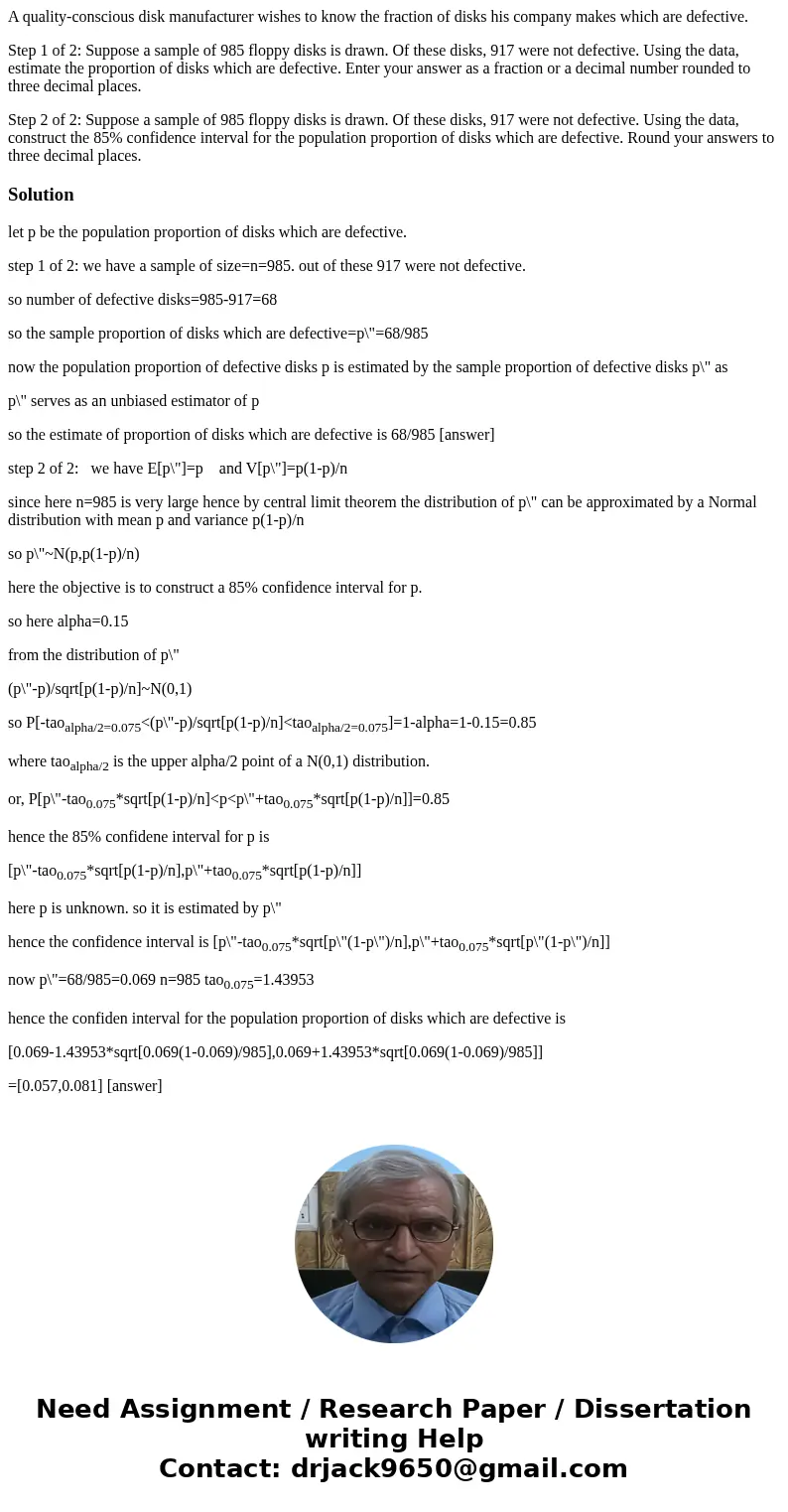A qualityconscious disk manufacturer wishes to know the frac
A quality-conscious disk manufacturer wishes to know the fraction of disks his company makes which are defective.
Step 1 of 2: Suppose a sample of 985 floppy disks is drawn. Of these disks, 917 were not defective. Using the data, estimate the proportion of disks which are defective. Enter your answer as a fraction or a decimal number rounded to three decimal places.
Step 2 of 2: Suppose a sample of 985 floppy disks is drawn. Of these disks, 917 were not defective. Using the data, construct the 85% confidence interval for the population proportion of disks which are defective. Round your answers to three decimal places.
Solution
let p be the population proportion of disks which are defective.
step 1 of 2: we have a sample of size=n=985. out of these 917 were not defective.
so number of defective disks=985-917=68
so the sample proportion of disks which are defective=p\"=68/985
now the population proportion of defective disks p is estimated by the sample proportion of defective disks p\" as
p\" serves as an unbiased estimator of p
so the estimate of proportion of disks which are defective is 68/985 [answer]
step 2 of 2: we have E[p\"]=p and V[p\"]=p(1-p)/n
since here n=985 is very large hence by central limit theorem the distribution of p\" can be approximated by a Normal distribution with mean p and variance p(1-p)/n
so p\"~N(p,p(1-p)/n)
here the objective is to construct a 85% confidence interval for p.
so here alpha=0.15
from the distribution of p\"
(p\"-p)/sqrt[p(1-p)/n]~N(0,1)
so P[-taoalpha/2=0.075<(p\"-p)/sqrt[p(1-p)/n]<taoalpha/2=0.075]=1-alpha=1-0.15=0.85
where taoalpha/2 is the upper alpha/2 point of a N(0,1) distribution.
or, P[p\"-tao0.075*sqrt[p(1-p)/n]<p<p\"+tao0.075*sqrt[p(1-p)/n]]=0.85
hence the 85% confidene interval for p is
[p\"-tao0.075*sqrt[p(1-p)/n],p\"+tao0.075*sqrt[p(1-p)/n]]
here p is unknown. so it is estimated by p\"
hence the confidence interval is [p\"-tao0.075*sqrt[p\"(1-p\")/n],p\"+tao0.075*sqrt[p\"(1-p\")/n]]
now p\"=68/985=0.069 n=985 tao0.075=1.43953
hence the confiden interval for the population proportion of disks which are defective is
[0.069-1.43953*sqrt[0.069(1-0.069)/985],0.069+1.43953*sqrt[0.069(1-0.069)/985]]
=[0.057,0.081] [answer]

 Homework Sourse
Homework Sourse